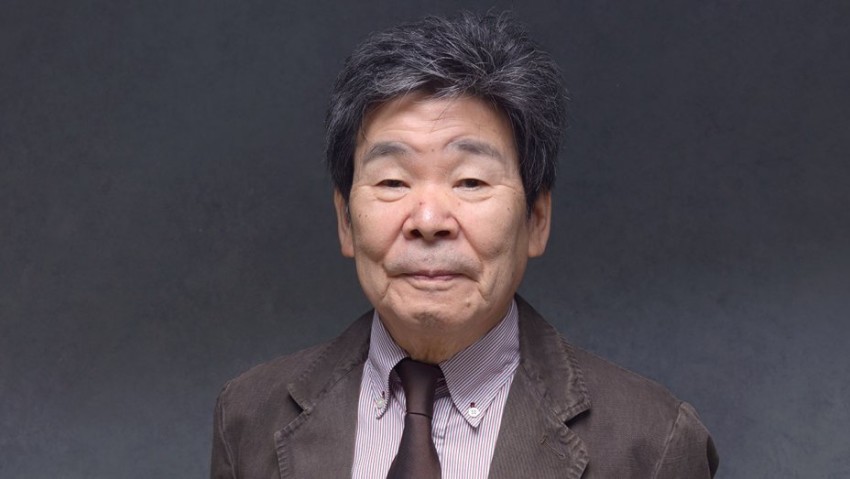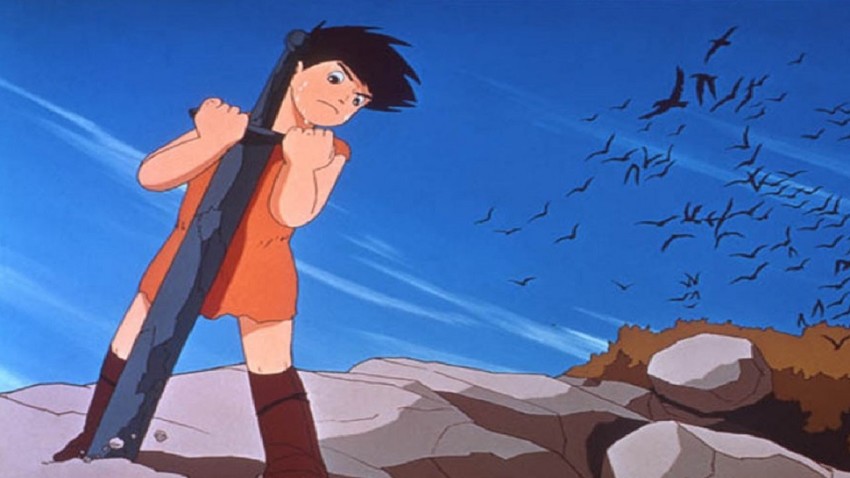Isao Takahata 1935-2018
April 6, 2018 · 0 comments
 To many people, Isao Takahata will be remembered as the man who directed Grave of the Fireflies, the saddest Japanese animation ever made. Yet his work brims with the joy of life, from Heidi frolicking in the Alps with Peter in Takahata’s landmark 1974 series, to a gang of mischievous children calling “Li’l Bamboo!” to a wide-eyed toddler in the Oscar-nominated The Tale of the Princess Kaguya, Takahata’s last anime.
To many people, Isao Takahata will be remembered as the man who directed Grave of the Fireflies, the saddest Japanese animation ever made. Yet his work brims with the joy of life, from Heidi frolicking in the Alps with Peter in Takahata’s landmark 1974 series, to a gang of mischievous children calling “Li’l Bamboo!” to a wide-eyed toddler in the Oscar-nominated The Tale of the Princess Kaguya, Takahata’s last anime.
Never an animator himself, Takahata was still one of anime’s most influential artists, ever pushing its commercially-mandated boundaries in umpteen different directions. Takahata had no obvious signature style, visually or thematically, although his work often highlighted the perceptions of children and the glories of nature.
In these ways, of course, Takahata’s work overlapped with that of his colleague Hayao Miyazaki. However, Takahata struck a very different course in his work after the two directors founded Ghibli together in 1985. At the studio, Takahata conducted visual and narrative experiments that were far more radical than Miyazaki’s. Takahata’s films were never blockbusters, but their artistic integrity dazzled critics and fans.
Takahata was born in 1935. In his twenties, he was an employee at the factory-scaled Toei studio, with credits on such 1960s TV shows as Ken the Wolf Boy and Akko-chan’s Secret. But his breakout opus, thankfully easy to see in Britain, was the cinema feature The Little Norse Prince (released in America as Horus, Prince of the Sun). It’s a rugged adventure story, and set a template to influence Miyazaki fantasies like Princess Mononoke. In it, a stout-hearted boy fights a cruel warlock.
 However, Takahata takes the film in a different, more mysterious direction, using the siren figure of the harper girl Hilda. She’s a mystery to the hero and the other characters; she was also a mystery to Takahata’s staff on Prince; and even, it’s suggested, to Hilda herself. “He (Takahata) was really pushing back the limits of animation,” Miyazaki acknowledged of Hilda. A commercial disaster on its Japanese release, Prince is now acknowledged as one of the most important anime films ever made.
However, Takahata takes the film in a different, more mysterious direction, using the siren figure of the harper girl Hilda. She’s a mystery to the hero and the other characters; she was also a mystery to Takahata’s staff on Prince; and even, it’s suggested, to Hilda herself. “He (Takahata) was really pushing back the limits of animation,” Miyazaki acknowledged of Hilda. A commercial disaster on its Japanese release, Prince is now acknowledged as one of the most important anime films ever made.
Undaunted by Prince’s “failure”, Takahata continued to push, striving to make anime depicting everyday life. This led to the toil and ultimately triumph of Heidi, which ran for 52 weeks in 1974 and is still beloved in Japan. Takahata would direct two more year-long epics in Heidi’s mould: 3000 Miles in Search of Mother, about a little boy’s odyssey from Italy to Argentina, and Anne of Green Gables, from the Canadian novel.
After spending a year overseeing Anne, Takahata was propelled into a wildly different project; Chie the Brat, a raucous comedy of Osaka life from a manga by Etsumi Haruki. It was made both as a film and a TV series, with Takahata helming both. By chance, Chie marked a turning point in Takahata’s work. After depicting so many far-off lands, from now on Takahata would depict Japan in his work, both its present and its past.
One example is The Story of Yanagawa’s Canals, a 165-minute live-action documentary which Takahata directed in 1987. Originating as a narrative animated film (details), it became an account of how people in a Kyushu town struggled to preserve their historic waterways.
 The following year saw Grave of the Fireflies. Takahata’s unforgettable depiction of two children in the wreckage of wartime Japan was based on the fictionalised memoirs of Akiyuki Nosaka. However, Takahata drew on his own memories too. As a nine-year-old, Takahata had run through a blazing town himself, as the boy Seita does in Grave’s first scenes.
The following year saw Grave of the Fireflies. Takahata’s unforgettable depiction of two children in the wreckage of wartime Japan was based on the fictionalised memoirs of Akiyuki Nosaka. However, Takahata drew on his own memories too. As a nine-year-old, Takahata had run through a blazing town himself, as the boy Seita does in Grave’s first scenes.
Takahata’s later Ghibli films were widely diverse. Only Yesterday (1991) is a mix of childhood nostalgia, rural documentary and propaganda film. Takahata stretches the anime medium in a way that’s both unspectacular and hugely audacious. The film has extended sequences in which characters simply talk while sitting in cars, while Takahata explores the adult conversations and adult emotions.
Pom Poko (1994) starts with Japanese fables. The main characters are shape-changing tanuki, struggling to protect their homeland from being destroyed by developers, as if the rabbits in Watership Down could magically fight back. But Pom Poko is also a beast fable and a wry satire on political activism that’s still wholly topical in 2018.
My Neighbours the Yamadas (1999) may have been a feature, but it had more in common with independent festival animation than it did with the blockbusters being then made at Ghibli with Miyazaki. It’s a set of sometimes poignant, often hilarious skits about an extended Japanese family, who are drawn as soft shapes and sketched lines, an absolute antithesis of Hollywood’s hunt for CG photo-realism.
Yamadas was Takahata’s last film until Princess Kaguya in 2013. A commercial underperformer by Ghibli’s standards, Kaguya won an Oscar nomination and lavish critical praise for Takahata, rivalling that for Grave a quarter-century earlier. But by then, Takahata was also supporting other animators he loved from around the world.
This would bear fruit dramatically with the release of the French-animated The Red Turtle in 2016. Its director, Michael Dudok de Wit, described how Takahata had supported the project through a decade of development. It was even Takahata who made the crucial suggestion to make Red Turtle without dialogue. To the end of his career, Isao Takahata never stopped reinventing anime; his legacy is one of the proudest in animation.
Leave a Reply